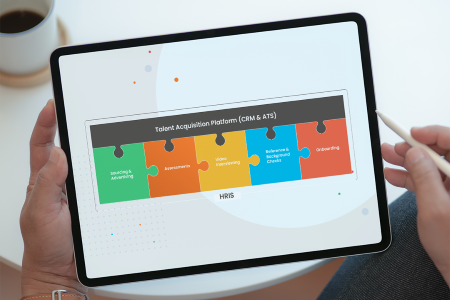
The C-Suite is asking tough questions about the workforce. Do you have the answers?
Explore insights from our expert panel as we explore how looking forward organisations can think differently about their people – their most valuable asset.
What is really going on in the world today? – Lynette Nixon, Director @ PWC
There are three faces of any organisation. The formal structure which results in compliance, informal structure which speaks to our natural passion to build social networks and relationships, and value creation structure which is where the real work gets done for our customers and leads to us being innovative and on the move.
Pre-COVID showed that 50% of efforts were focused on feeding the formal structure, reporting upwards and downwards with a focus on risk compliance. 30% was informal, leaving only 20% of effort left for value creation. There was something seriously wrong about how we were allocating our efforts.
As a result of COVID, we’ve been forced to change how we work so dramatically, our desire to connect has really amped up. With informal structures becoming so important, the hierarchy has been subdued somewhat as we see our workforce making decisions for themselves. As the supervision of work changes, the effort has been shifted into value creation.
Currently, we have organisations that have a higher potential to create value. We’ve been able to achieve some kind of workforce revolution.
Remember the conversations about the future of work we were having just a few months back? It’s still here, but the difference is we’re in the middle of it.
Big themes around increased expectations for employees and customers are still high, but the box for the demand for different skills and expectations is also high.
Some driving external factors have changed. The pace of change has reframed how work is done at a senior leadership team and board level, so we need to work out how we keep the benefits of productivity gain while keeping high-quality talent with us.
From an HR perspective, now is the right time to be a relevant and strong voice on the board. We’re changing the conversations the senior HR people are bringing to leaders. We’re addressing issues as a cross-functional team, rather than in silo and looking at workforce skills and workforce strategy. Brands will either live or die in COVID and HR leaders will help make informed strategic decisions.
What are the implications for workforce strategy and transformation? – Frankie Raymond, Senior HR Executive
Over the last few months, there has been the biggest disruption to People and Culture since the GFC. We’ve seen organisations accelerate people strategy initiatives that teams have been trying to get on the agenda for some time.
These are:
Technology: We have seen the rapid ramp-up on digital enablement so that employees can work from home. This is something that has been pushed for a while, but it is now seen as essential.
Care: Wellbeing is a make or break moment for organisations to show up and put wellbeing at the forefront. Some organisations have invested in wellbeing during this time, whereas others have reflected tone through coordination.
Mobility: We have seen an unprecedented movement of talent. A new language around essential work has been coined, as both a society and for organisations. We’ve moved talent with tough, but rapid decisions.
Flexibility: Employees are now going part-time because of external factors, such as child care. They are having conversations with leadership teams around reprioritisation of work in the hours available to them. This has busted norms and assumptions and shown us what is possible. Some leaders who weren’t supportive of flexible or part-time work are now doing it themselves.
What can we focus on moving forward?
Rethinking work and workforce design: Organisations will need to continue to define their definition of essential work with a new lens on work design and mobilise talent to value-creating an essential workforce.
Leading flexible and mixed workforce: Equipping a remote and flexible workforce to connect and collaborate, while driving engagement and productivity in a new paradigm.
Focusing on integrated employee experience: A new set of capabilities and ways of working for HR, while creating an employee experience that creates customer value. It’s all about genuine care and connection in a holistic experience.
What does this mean for your operating model? – Gareth Flynn, Managing Director @ TQSolutions
We desperately need a Leadership and Organisational Mindset shift towards People and Talent in our organisations- this is a major handbrake for HR and Talent change efforts.
Technology vendors are now building tools focused on internal workforce mobility, a critical enabler. Before it was all focused on the acquisition and there was a huge gap. Technology like LiveHire is now playing in the mobility space, leading the way for total talent.
Introducing the TEaM model: the Talent and HR function of the future.
TALENT: The TEaM Players design work experience ‘products’ for people to ‘subscribe’ to, and they develop experiences and services catering for all talent types.
ENGAGEMENT: The TEaM Players engage with Talent at all stages of the relationship lifecycle as they execute their services.
MOBILITY: The TEaM Players provide the business with workforce/skills visibility within the company and in the external market. They are the conduit and facilitators of any internal or external moves.
For years companies and HR teams have been trying to ‘fix the functions’ supporting People and Talent, but they have largely failed to fix the organisational mindset towards people and talent.
This organisational immaturity means that companies have been transforming with the handbrake on instead of the accelerator to the floor. Many have failed as a result.
The Talent Maturity Model v2.0 seeks to help companies assess their enablement but more importantly their organisational and leadership mindset towards People & Talent.
It’s worth noting that Frankie was the original Client Sponsor that commissioned the MM v1.0 in 2017, which was co-designed by Lynette and her team at PwC and by my team at TQ. We came together again in 2019 with industry to co-create this version which launched in June and now incorporates our post COVID thinking towards TEaM.
The key takeaway, Mindset is WAY more important than enablement.
You can view the Talent Maturity model here.
How can technology enable organisational agility? – Gigi Gozzi, Founder & Chief Product Officer @ LiveHire
The top three organisations in the world – Apple, Amazon and Microsoft- have leapt forward in the last 3-6 months, more than ever before.
As Satya Nadella, CEO of Microsoft said: “We have seen two years worth of digital transformation in two months.”
Imagine that level of transformation, innovation and disruption! Imagine the level of breaking down the barriers of change?
There is a growing divergence between top and bottom performers because we are seeing the acceleration of trends that were already in place. These top performers were already focusing on the organisational agility and scalability pre-COVID, by focusing on people and technology at the same time. COVID elevated this need for digital business transformation.
To deliver rapid business transformation and digital transformation, in pursuit of productivity and agility you must:
- Identify the core business functions and invest in them
- See how they operate together, and the connecting tissues, breaking down those silos
- Are they multifunctional, fully enabled, high-tech teams?
- Have you empowered them to hire their A-team, as we call it, the ‘dream-team’ at LiveHire?
- Very importantly, also look at the hidden core functions
Also think: What was the problem before? What stopped us making the changes and building the tech we know we needed?
Want to hear more? Check out our part two Q&A section with the panel below.
You can also view the original slides and recordings here or reach out to us about how we can help your organisation get ready for the future workforce.



